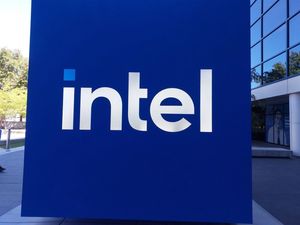
The escalating frequency and intensity of flood events globally are driving a transformative shift in how local governments approach disaster management. Moving beyond reactive measures, municipalities are increasingly embracing Artificial Intelligence (AI) flood prediction technology to foster proactive resilience, marking a significant leap forward for public safety and environmental stewardship. This strategic pivot, underscored by recent advancements and broader integration efforts as of October 2025, promises to revolutionize early warning systems, resource deployment, and long-term urban planning, fundamentally altering how communities coexist with water.
Unpacking the Technological Wave: Precision Forecasting and Proactive Measures
The core of this revolution lies in sophisticated AI models that leverage vast datasets—ranging from meteorological and hydrological information to topographical data, land use patterns, and urban development metrics—to generate highly accurate, real-time flood forecasts. Unlike traditional hydrological models that often rely on historical data and simpler statistical analyses, AI-driven systems employ machine learning algorithms to identify complex, non-linear patterns, offering predictions with unprecedented lead times and spatial resolution.
A prime example is Google's (NASDAQ: GOOGL) Flood Hub, which provides AI-powered flood forecasts with up to a seven-day lead time across over 100 countries, reaching hundreds of millions of people. This platform's global model is also accessible via an API, allowing governments and partners to integrate these critical insights into their own disaster relief frameworks. Similarly, companies like SAS have partnered with cities such as Jakarta, Indonesia, to deploy AI-powered analytics platforms that forecast flood risks hours in advance, enabling authorities to implement preventive actions like closing floodgates and issuing timely alerts.
Recent breakthroughs, such as a new AI-powered hydrological model announced by a Penn State research team in October 2025, combine AI with physics-based modeling. This "game-changer" offers finer resolution and higher quality forecasts, making it invaluable for local-scale water management, particularly in underdeveloped regions where data might be scarce. Furthermore, H2O.ai unveiled a reference design that integrates NVIDIA (NASDAQ: NVDA) Nemotron and NVIDIA NIM microservices, aiming to provide real-time flood risk forecasting, assessment, and mitigation by combining authoritative weather and hydrology data with multi-agent AI systems. These advancements represent a departure from previous, often less precise, and more resource-intensive methods, offering a dynamic and adaptive approach to flood management. Initial reactions from the AI research community and industry experts are overwhelmingly positive, highlighting the potential for these technologies to save lives, protect infrastructure, and mitigate economic losses on a grand scale.
Reshaping the AI Landscape: Opportunities and Competitive Shifts
The burgeoning field of AI-powered flood prediction is creating significant opportunities and competitive shifts within the tech industry. Companies specializing in AI, data analytics, and geospatial intelligence stand to benefit immensely. Google (NASDAQ: GOOGL), with its expansive Flood Hub, is a major player, solidifying its "AI for Good" initiatives and extending its influence into critical infrastructure solutions. Its open API strategy further entrenches its technology as a foundational component for governmental disaster response.
Microsoft (NASDAQ: MSFT) is also actively positioning itself in this space, emphasizing "trusted AI" for building resilient infrastructure. The company's collaborations, such as with Smart Cities World, highlight AI's role in anticipating, adapting, and acting, with cities like Seattle citing their 2025–2026 AI Plan as a benchmark for responsible AI deployment. This indicates a strategic move by tech giants to offer comprehensive smart city solutions that include environmental resilience as a key component.
Startups and specialized AI firms like H2O.ai and those developing platforms such as Sentient Hubs are also carving out significant niches. Their focus on integrating multi-agent AI systems, real-time data processing, and tailored solutions for specific governmental and utility needs allows them to compete effectively by offering specialized, high-performance tools. The collaboration between H2O.ai and NVIDIA (NASDAQ: NVDA) underscores the growing importance of powerful hardware and specialized AI frameworks in delivering these high-fidelity predictions. This competitive landscape is characterized by both collaboration and innovation, with companies striving to offer the most accurate, scalable, and integrable solutions. The potential disruption to existing products or services is significant; traditional weather forecasting and hydrological modeling firms may need to rapidly integrate advanced AI capabilities or risk being outmaneuvered by more agile, AI-first competitors.
Broader Implications: A Paradigm Shift for Society and Environment
The widespread adoption of AI flood prediction technology represents a profound shift in the broader AI landscape, aligning with trends towards "AI for Good" and the application of complex AI models to real-world, high-impact societal challenges. Its impact extends far beyond immediate disaster response, touching upon urban planning, insurance, agriculture, and climate change adaptation.
For public safety, the significance is undeniable. Timely and accurate warnings enable efficient evacuations, optimized resource deployment, and proactive emergency protocols, leading to a demonstrable reduction in casualties and property damage. For instance, in Bihar, India, communities receiving early flood warnings reportedly experienced a 30% reduction in post-disaster medical costs. Environmentally, AI aids in optimizing water resource management, reducing flood risks, and protecting vital ecosystems. By enabling adaptive irrigation advice and enhancing drought preparedness, AI facilitates dynamic adjustments in the operation of dams, reservoirs, and drainage systems, as seen with Sonoma Water's implementation of a Forecast-Informed Decision-Making Tool (FIRO) at Coyote Valley Dam in October 2025, which optimizes reservoir operations for both flood risk management and water supply security.
However, this transformative potential is not without concerns. Challenges include data scarcity and quality issues in certain regions, particularly developing countries, which could lead to biased or inaccurate predictions. The "black-box" nature of some AI models can hinder interpretability, making it difficult for human operators to understand the reasoning behind a forecast. Ethical and privacy concerns related to extensive data collection, as well as the potential for "data poisoning" attacks on critical infrastructure systems, are also significant vulnerabilities that require robust regulatory and security frameworks. Despite these challenges, the strides made in AI flood prediction stand as a major AI milestone, comparable to breakthroughs in medical diagnostics or autonomous driving, demonstrating AI's capacity to address urgent global crises.
The Horizon: Smarter Cities and Climate Resilience
Looking ahead, the trajectory of AI flood prediction technology points towards even more integrated and intelligent systems. Expected near-term developments include the continued refinement of hybrid AI models that combine physics-based understanding with machine learning's predictive power, leading to even greater accuracy and reliability across diverse geographical and climatic conditions. The expansion of platforms like Google's Flood Hub and the proliferation of accessible APIs will likely foster a more collaborative ecosystem, allowing smaller governments and organizations to leverage advanced AI without prohibitive development costs.
Long-term, we can anticipate the seamless integration of flood prediction AI into broader smart city initiatives. This would involve real-time data feeds from ubiquitous sensor networks, dynamic infrastructure management (e.g., automated floodgate operation, smart drainage systems), and personalized risk communication to citizens. Potential applications extend to predictive maintenance for water infrastructure, optimized agricultural irrigation based on anticipated rainfall, and more accurate actuarial models for insurance companies.
Challenges that need to be addressed include the ongoing need for robust, high-quality data collection, particularly in remote or underserved areas. The interoperability of different AI systems and their integration with existing legacy infrastructure remains a significant hurdle. Furthermore, ensuring equitable access to these technologies globally and developing transparent, explainable AI models that build public trust are critical for widespread adoption. Experts predict a future where AI-powered environmental monitoring becomes a standard component of urban and regional planning, enabling communities to not only withstand but also thrive in the face of escalating climate challenges.
A Watershed Moment in AI for Public Good
The accelerating adoption of AI flood prediction technology by local governments marks a watershed moment in the application of AI for public good. This development signifies a fundamental shift from reactive crisis management to proactive, data-driven resilience, promising to save lives, protect property, and safeguard environmental resources. The integration of advanced machine learning models, real-time data analytics, and sophisticated forecasting capabilities is transforming how communities prepare for and respond to the escalating threat of floods.
Key takeaways include the critical role of major tech players like Google (NASDAQ: GOOGL) and Microsoft (NASDAQ: MSFT) in democratizing access to powerful AI tools, the emergence of specialized AI firms like H2O.ai driving innovation, and the profound societal and environmental benefits derived from accurate early warnings. While challenges related to data quality, ethical considerations, and integration complexities persist, the overarching trend is clear: AI is becoming an indispensable tool in the global fight against climate change impacts.
This development's significance in AI history lies in its tangible, life-saving impact and its demonstration of AI's capacity to solve complex, real-world problems at scale. It underscores the potential for AI to foster greater equity and enhance early warning capabilities globally, particularly for vulnerable populations. In the coming weeks and months, observers should watch for further expansions of AI flood prediction platforms, new public-private partnerships, and continued advancements in hybrid AI models that blend scientific understanding with machine learning prowess, all contributing to a more resilient and prepared world.
This content is intended for informational purposes only and represents analysis of current AI developments.
TokenRing AI delivers enterprise-grade solutions for multi-agent AI workflow orchestration, AI-powered development tools, and seamless remote collaboration platforms.
For more information, visit https://www.tokenring.ai/.






